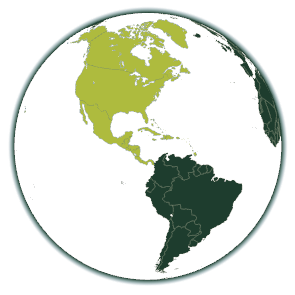Mahonia aquifolium
Oregon Grape
The Oregon grape (Mahonia aquifolium) is an evergreen plant that is native to North America. It is often used as an ornamental plant in Europe and other parts of the world and has become invasive in some areas. The plant can reach a height of up to 2 metres and is characterised by its dark green, glossy leaves, which have thorny tips at the edges. They are similar in shape to those of the European holly (Ilex aquifolium). Mahonia aquifolium flowers from April to May with bright yellow flowers arranged in dense racemes at the end of the branches. The resulting fruits are small, blue-black berries that are often eaten by birds, which helps to spread the seeds.
Types of damage
Region of origin
North America

Introduction vectors
Current distribution
Based on the FlorKart Database of the Federal Agency for Nature Conservation, as of 2013
Miscellaneous
Dispersion forecast
Indicates the proportion of land suitable for habitat under current and future climate conditions (2060-2080) under three emission scenarios (RCP26, RCP45 & RCP85).

powered by Advanced iFrame. Get the Pro version on CodeCanyon.
Habitat suitability under current climate conditions
These habitat suitability maps show for Mahonia aquifolium where suitable habitat conditions exist.
The map on the left shows this for current climate conditions. Below this are maps for the time classes 2040-2060 and 2061-2080, in which three different emission scenarios can be selected.
The slider at the top left allows you to adjust the opacity of the map to make orientation easier.
By clicking on the respective quadrant, information on the environmental conditions present in it can be called up.
The methodology is explained here .
powered by Advanced iFrame. Get the Pro version on CodeCanyon.
powered by Advanced iFrame. Get the Pro version on CodeCanyon.














